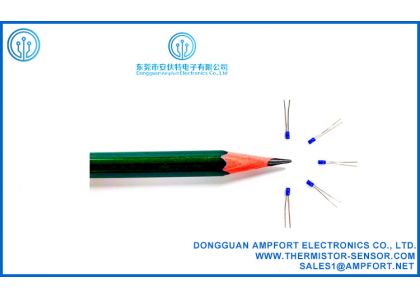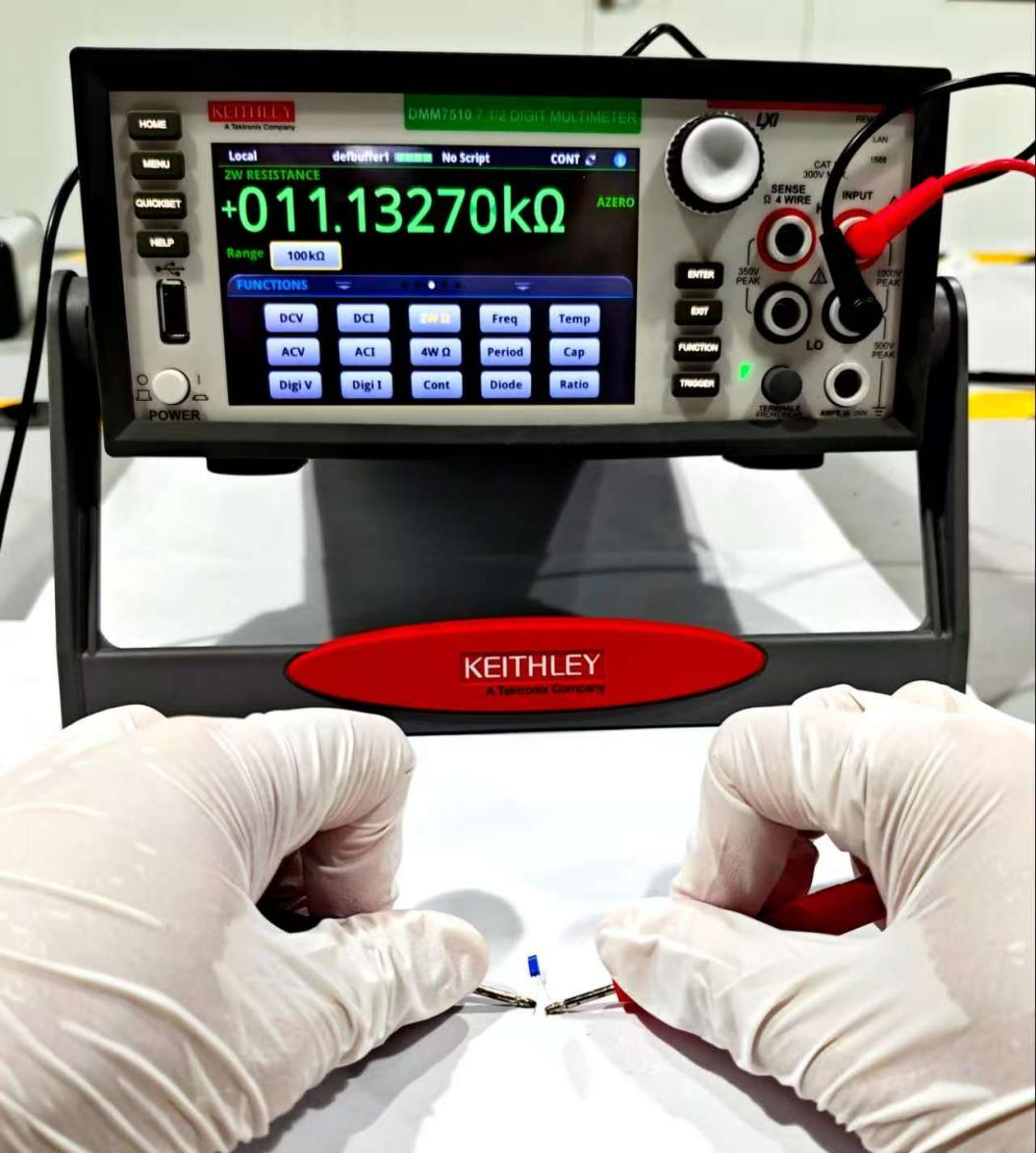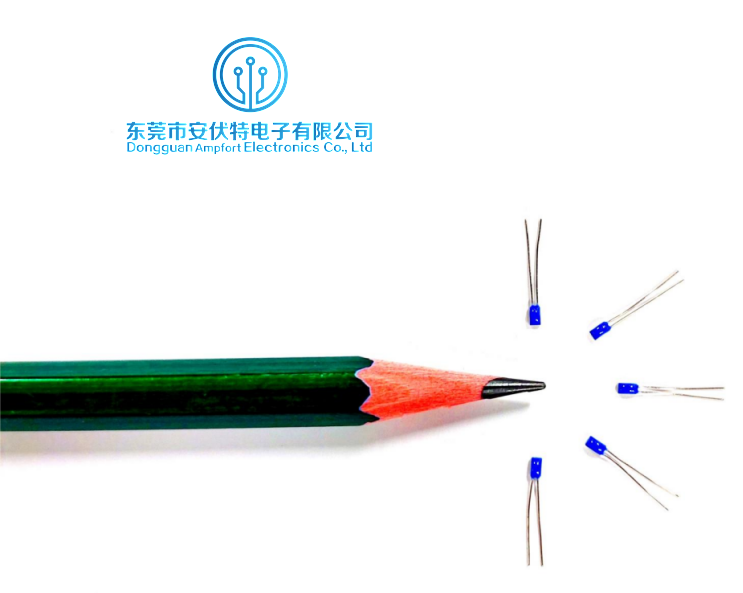
Recently, Dongguan Ampfort officially announced that its independent research and development of the first domestic Pt10000 and ultra-small size Pt1000 platinum resistance temperature sensitive chip successfully mass production. These 1 breakthrough achievements have filled the gap in this field in China, marked a major leap forward in China's thin film temperature sensitive chip technology, and injected new vitality into the development of related industries.
Pt10000 measured at 29 degrees C 11132.7 ohms
With the excellent physical properties and high resistance design of platinum material, Pt10000 show many irreplaceable functional advantages in the field of temperature measurement, mainly in the following aspects:
1. The high resistance design of the Pt10000 not only greatly improves the sensitivity and accuracy of temperature measurement, but also brings unique advantages of adapting to complex scenes, and solves common pain points of common low resistance platinum resistors (such as Pt100), such as strong resistance to wire loss, no error in long-distance transmission, and no additional "three-wire" and "four-wire" wiring to compensate for wire resistance (common Pt100 requires four-wire system to eliminate long-distance error), simplifies wiring design and reduces installation costs.
2. The high resistance design makes the current of the Pt10000 smaller during operation, and its low power consumption characteristic can significantly extend the endurance of the device (usually 30% ~ 50% endurance), avoid frequent charging or battery replacement, and is especially suitable for Internet of Things devices with strict power consumption requirements.
3. The Pt10000's high resistance output signal is stronger (under the same temperature change, the resistance change is larger), the signal to noise ratio (SNR) is higher, and the anti-electromagnetic interference ability is 5 to 10 times higher than that of the low resistance platinum resistance; even in the industrial environment with strong electromagnetic interference, it can operate stably to ensure the accuracy and reliability of the data. Ensures temperature stability in industrial controls such as precision injection molding machines, semiconductor wafer fabrication.
The Pt10000 is widely used in industrial control, medical equipment, laboratory testing, high-end home appliances and other scenarios that require temperature accuracy and stability.
The advent of Pt10000 is an important milestone in the development of China's chip industry. It not only breaks the monopoly of foreign technology, but more importantly, it provides strong technical support for many industries that rely on sensor chips in my country, and will promote these industries to gain stronger competitiveness in the global market.
For a long time, in the field of temperature sensors, the domestic market is subject to foreign technical barriers, core components rely on imports, the development of the industry is facing a "neck" dilemma. In order to break through this 1 situation, the AMPFORT R & D team has invested a total of 10 million yuan. After several rounds of technical iteration and rigorous testing, it has finally overcome the technical problems in the production process of high-precision temperature sensor sensitive chips, and successfully created a series of thin film platinum resistance sensitive chips with completely independent intellectual property rights, which are widely used in instruments, household appliances, new energy vehicles and various electronic equipment. Also available this time is the ultra-small Pt1000, which is suitable for small packages and fast-response temperature measurement scenarios, both the first in China.
Pt1000 miniature
As a leading enterprise in the domestic thin film platinum resistance industry, AMPFORT has always taken "scientific and technological innovation" as the core strategy of development. The first domestic Pt10000 and Pt1000 ultra-small size launched this time is not only a concentrated expression of the company's R & D strength, but also an important achievement in its mission of "technological self-reliance and self-reliance". The new development pattern of "localization of products and service localization" effectively reduces production costs in related industries and enhances the competitiveness of domestic enterprises in the international market.